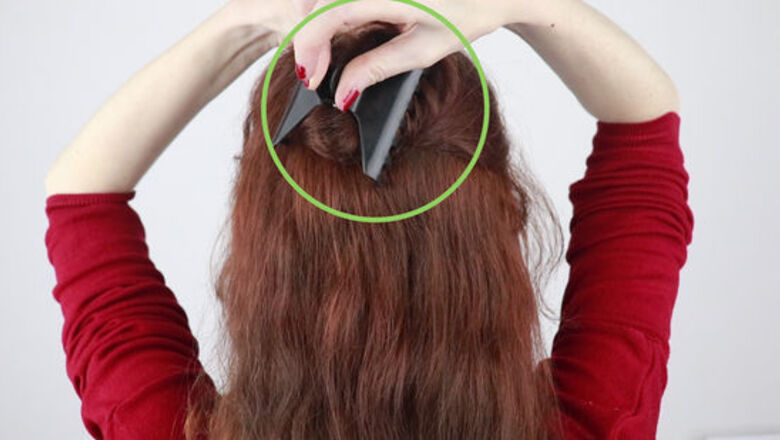
views
Using a Flat Iron
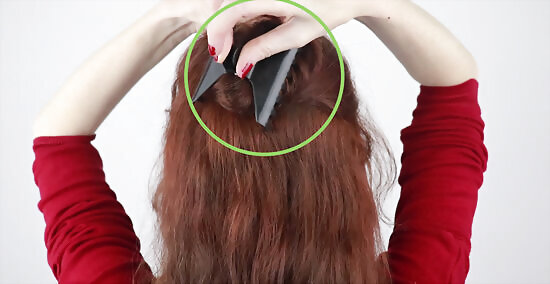
Separate your hair into sections if it’s thick. To ensure you straighten your entire head of hair evenly and quickly, separate your hair into at least 2 sections. You can either split your hair down the middle, or you can tie up the top layer using a hair clip or tie. If you have super thick hair, consider separating your hair into 4 sections. Tie up the top layer of your hair into 2 buns on top of your head, and then separate the bottom layer into 2 sections as well. If you split your hair down the middle, you can simply pull each side in front of each shoulder to keep it in place for longer hair. If you have short hair that doesn’t reach your shoulders, use a hair tie or hair clip to keep your hair in sections.
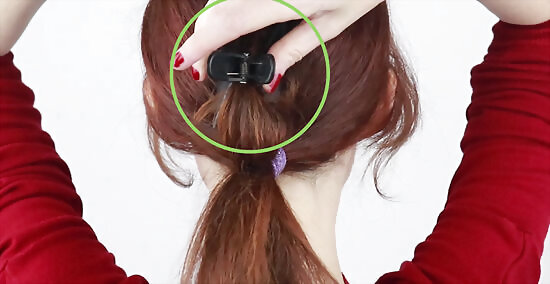
Pull your hair into a low ponytail if you have very thin hair. Save time and skip the process of separating your hair into sections if you have thinner hair. After you've pulled your hair into a low ponytail, just clamp down on the top of the ponytail and straighten the length of it. Once the ponytail is straight, undo it and straighten the top of your hair and any other bumps.
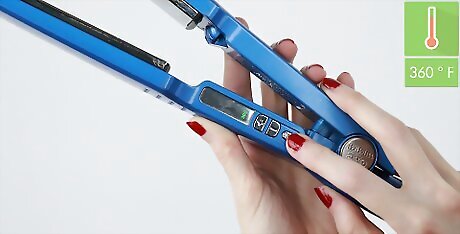
Set the flat iron to the right temperature based on your hair texture. Instead of cranking the heat up as high as it will go, take your hair texture into consideration when heating up your flat iron. If your hair is thin or fine, the temperature should be below 360 °F (182 °C). If you have normal to medium hair, set the temperature between 360 to 390 °F (182 to 199 °C). For thick hair, use a temperature of 390 to 410 °F (199 to 210 °C).
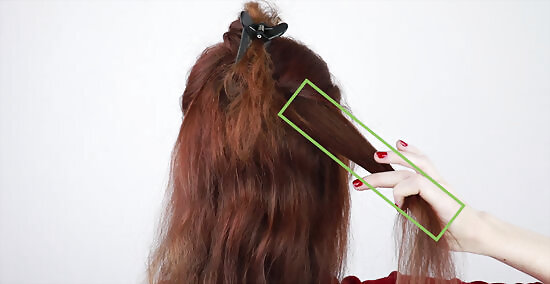
Clamp the first 1 inch (2.5 cm) section of hair in the flat iron. By choosing a 1 inch (2.5 cm) section of hair, you'll be able to straighten your hair much faster and more efficiently. Clamp down on the strands of hair at the top of your head, about 0.5 inches (1.3 cm) from your roots.
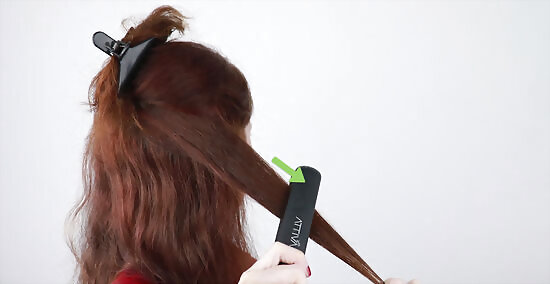
Use light pressure to quickly pull the iron down the length of your hair. Once you've clamped down, pull the flat iron down the section of hair. Hold your hair taut so that your hair straightens faster.
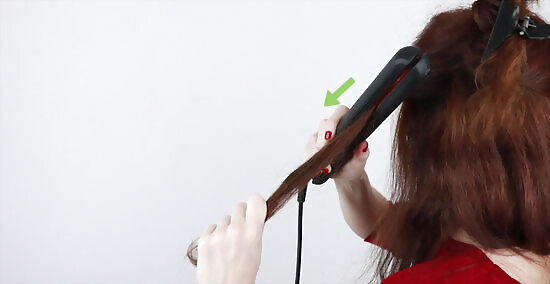
Work systematically in 1 inch (2.5 cm) sections from 1 side to the other. Finish straightening an entire section of hair before moving on to the next one to save time. This will keep you from accidentally straightening the same pieces of hair multiple times.
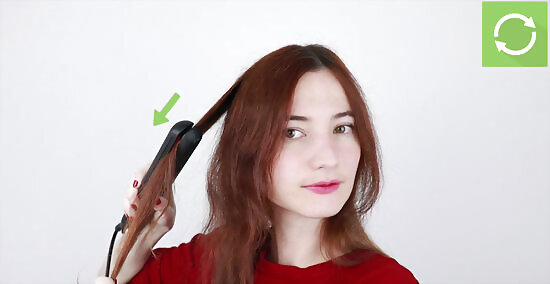
Unclip a separated section of hair and repeat the process. Once the unclipped section of hair is straight, move it behind your shoulders. Unclip the next section and pull that section in front of your shoulders. Repeat the process of straightening 1 inch (2.5 cm) sections of hair. Putting already-straightened sections of hair behind your shoulder will keep this section of hair from getting mixed in with the section that hasn't been straightened yet, saving you time.
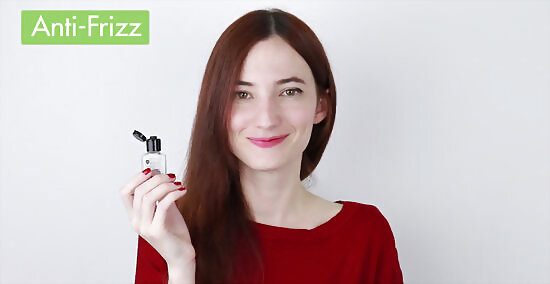
Add products to reduce frizz when you’re finished. To make sure your hair stays straight throughout the day, consider applying a hairspray or anti-frizz product. Apply the product or hairspray by quickly spraying a brush, and then brush through your hair evenly for thorough application. Make sure your hair has completely cooled down before applying a product.
Speeding up the Process

Shampoo and condition your hair first. Clean hair is easier and faster to straighten. Using a conditioner along with your shampoo will make your hair softer and smoother, making the straightening process much quicker. Use a straightening shampoo and conditioner to help smooth out your hair and make the flat ironing process even easier.
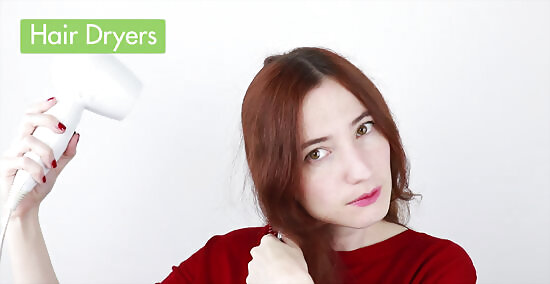
Dry your hair completely before using a flat iron. If your hair is damp at all while you're using a flat iron, not only will it damage your hair, but it will also take you much longer to get it straight. To dry your hair quickly, use a blow dryer with the nozzle aimed downwards. Hair dryers can be damaging on your hair — always move the nozzle back and forth when drying your hair, never aiming it directly at a strand.
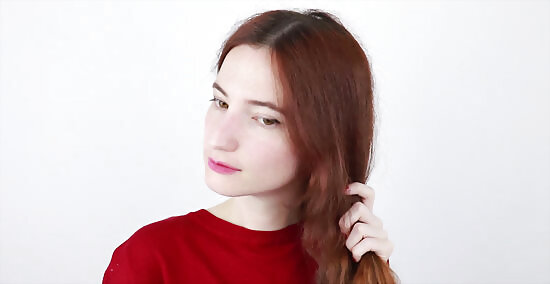
Brush your hair thoroughly before using the flat iron. If your hair isn't brushed beforehand, you'll end up with bumps or jagged angles where the flat iron went over hair that's going in different directions, slowing down your straightening process. Take the time to brush or comb through your hair to remove any knots or tangles before straightening it for the best results.
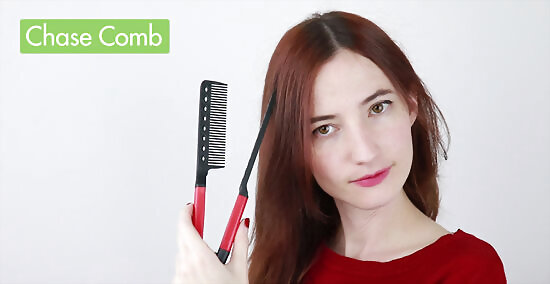
Use a chase comb to make the process go faster. Chase combs (also sometimes called straightening combs) comb your hair and separate it evenly for you as you're straightening your hair. If you have medium or coarse hair, a chase comb is an ideal tool for straightening your hair. Use 1 hand to insert a strand of hair into the chase comb and clamp the comb closed starting at the top of the strand. With your other hand, you'll begin straightening the strand, pulling both the chase comb and straightener down the section of hair.
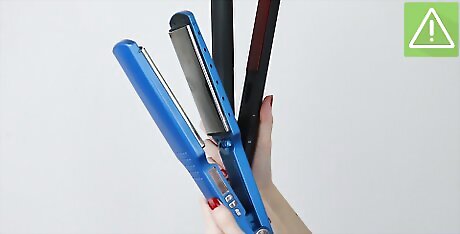
Invest in a tool that dries your hair as you straighten it. There are several hair tools on the market that are designed to dry your hair and straighten it at the same time. Go online to see if any of these tools are right for you. These tools include a hairbrush that also acts as a ceramic dryer and hair dryers that have negative ion technology.

















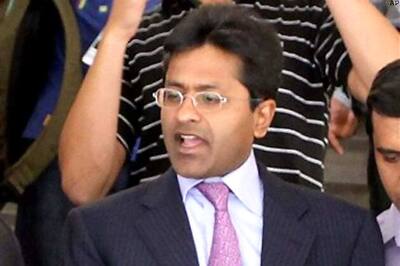

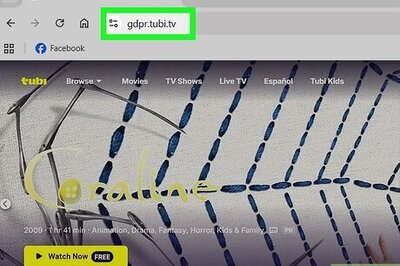
Comments
0 comment